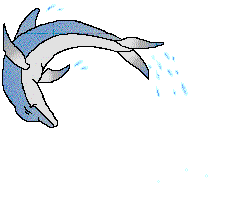
Swimming to Summarization
Reading to Learn
Rationale: Summarization is essential for reading comprehension. A helpful method to accomplish summarization is the about-point method. The about-point method asks two key questions:
-
What is the text about?
-
What is the main point the writer is trying to make about the topic?
The first question is typically much easier because students can identify the topic that becomes the subject of the topic sentence. The second question is much harder because authors typically make multiple key points. Students must “superordinate,” the points or find the overarching term or phrase that covers all the main points the author makes. The main point will become the predicate the topic sentence.
Materials:
-
Highlighters
-
Paper and pencils
-
Copies of National Geographic Kids article for each student (link below)
-
Summarization Checklist (teacher only)
-
Comprehension questions
Procedures:
Say: When we read, we are trying to figure out what the words on the page say, but we are also trying to figure out what they mean and what is most important about them. [Explain to children why summarization is important].
Say: When we read, we don’t try and remember every word we read, we would have to spend all day just trying to remember all the words and all the details. That is why we summarize, because superstar readers don’t try to remember everything. Superstar readers use summarization strategies to remember important points the author makes. By using these strategies, it reduces a text from hundreds to thousands of words to just a small list of things.
Say: The best way to summarize is using a skill called about-point. Does anyone know what this means? [Wait for student responses]. About-point is asking yourself an easy question and a hard question to make a topic sentence. Does anyone know what the easy question might be? [Wait for student responses]. The easy question is to ask yourself, “What is this text about?” Now what about the second question, [again, wait for student responses]. It is “What is the main point the author is making about the topic? this is challenging because we must create an umbrella term for all the important points we found from the author.
Say: I am about to show you how to do an about-point summary with a story about dolphins and how they communicate. What is a dolphin? Do you know where they live? Do dolphins know how to talk? What sound does a dolphin make? [Wait for student responses]. Yes, those are all right!
Say: Here is a paragraph about Dolphins and their language, that we are going to read and then summarize together:
They also talk to each other. Starting from birth, dolphins squawk, whistle, click, and squeak. "Sometimes one dolphin will vocalize and then another will seem to answer," says Sara Waller, who studies bottlenose dolphins off the California coast. "And sometimes members of a pod vocalize in different patterns at the same time, much like many people chattering at a party." And just as you gesture and change facial expressions as you talk, dolphins communicate nonverbally through body postures, jaw claps, bubble blowing, and fin caresses.
This paragraph is about the dolphin language, but what are the important points the author is making? [Write on board] The author is talking about that starting from birth dolphins know how to communicate and how they demonstrate language in different ways. Using this information, I can make a topic sentence summarizing what I just read: Dolphins learn how to speak right from birth and even know how to express themselves through body language.
Say: Now I want you to use about-point on a paragraph.
In many ways, you are just like the more than 30 species of dolphins that swim in the world's oceans and rivers. Dolphins are mammals, like you are, and must swim to the surface to breathe air. Just as you might, they team up in pods, or groups, to accomplish tasks. And they're smart.
What is this paragraph about? Yes, Dolphins! What is the main point the author is trying to make? Dolphins are mammals that must breathe at the surface, and they team up in pods to complete tasks. Now, putting these together with what we have learned earlier to summarize the article with topic sentences. Let’s try it together! (Wait for responses and correct what is wrong).
Say: Now I want you all to practice! Read the article again, silently to yourselves and practice distinguishing unimportant from important things. Underline what is unimportant and highlight details that are important.
Say: Now I’d like you to finish reading the article and use about-point to make a topic sentence for each paragraph. When you are finished, you will have a good summary of the whole article, which will help you remember important facts about dolphins. You are writing a short version of the article in your own words, including only the important ideas to remember. After you finish, I will collect your summaries and make sure everyone has got it.
Assessment:
-
Collect each student’s summary of the article and evaluate the summarization using the following checklist:
-
__Collected important information
-
__ Ignored trivia and examples in summary.
-
__ Significantly reduced the text from the original
-
__ Sentences brought ideas together from each paragraph
-
__Sentences organized coherently into essay form.
-
-
Have the student’s complete comprehension questions about the article:
-
Have scientists cracked the code of dolphin language?
-
What are some ways dolphins communicate?
-
What are some different reasons why dolphin talk?
-
Why is understanding dolphin speak tricky?
-
How can we learn what dolphins are saying?
-
Resources:
Kids National Geographic. Secret Language of Dolphins. https://kids.nationalgeographic.com/nature/article/secret-language-of-dolphins
Similar Design by Libby McKee, “Swimming in Summarization,” https://edmckee13.wixsite.com/lessondeigns/reading-to-learn
Similar Design by Maggie Glidewell, “Swimming into Summarization,” https://maggieg221.wixsite.com/my-site-1/copy-of-home-3
Reading Genie, Awakenings